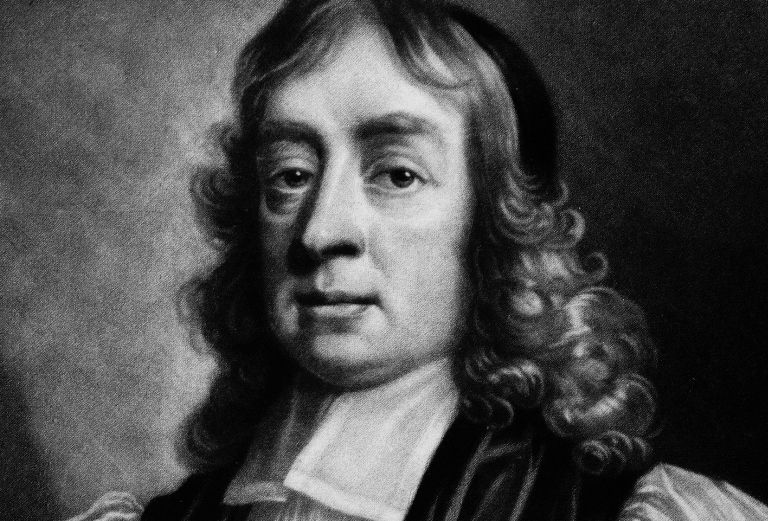
by Alexis Haslam, community archaeologist
Bishop Henry Compton is probably the Palace’s most famous Bishop, notorious for his incredibly valuable collection of plants and the fabulous botanic garden that he created within the grounds. Succeeding Humphrey Henchman in 1675 and remaining in his post until his death in 1713, he continues to be renowned for the generosity that he bestowed upon the residents of Fulham. In fact, we like the guy so much that we named the new office suite on the western side of the Tudor Courtyard after him.
As an archaeologist I would much rather they were named after Richard Hill under whose tenure the courtyard was probably constructed (my suggestion of the Turkey Wing was outright rejected!). But it did start me thinking; although we all know about Compton and his plants, was he actually any good at his job – being the Bishop of London? Do we give him too much credit above other Bishops whose more religious efforts are often ignored? Was he really one of the good guys?
A good place to start with this concerns his relationship with James II. James was Catholic in a time of religious flux, but he was crowned with little outright opposition. There were a couple of rebellions early on in his reign but these were put down confidently and somewhat bloodily. When it came to religion however James was keen on the concept of tolerance, most probably because he followed a minority faith. However, there was a growing feeling of anti-Catholicism within the nation, with vitriolic preaching and protesting against this doctrine. For this reason, in 1687 James issued The Declaration of Indulgence, a proclamation designed to support religious freedom by suspending penal laws that enforced conformity to the Church of England.
In fact, James went as far as making this somewhat thought provoking speech:
suppose… there should be a law made that all black men should be imprisoned, it would be unreasonable and we had as little to quarrel with other men for being of different (religious) opinions as for being of different complexions.
James II
There is of course an element of self-preservation in James’ decision making here, but this did little to quell the feelings of anti-popery present within the streets of London. In 1688 Dr John Sharp, the Rector of St Giles in the Fields gave a fiery anti-Catholic sermon against the laws of the Declaration. Compton failed to censure Sharp and it was clear he wasn’t interested in attempting to supress the Protestant zealots within the City. In fact it was suspected that Compton supported the violent opposition to the establishment of a Catholic Church on Lime Street in 1686. This was eventually demolished by a baying mob in 1689 whilst Compton was still Bishop and it wasn’t until 1994 that another Catholic Church was located within the City of London’s boundaries.
So, in 1686 Compton was suspended by the ecclesiastical commission and quite literally went on gardening leave to Fulham. He got lucky though. The Glorious Revolution followed in 1688 as James fled to France and was replaced by William III, a change which Compton rather unsurprisingly supported vociferously and was actively involved in. The end result was that for over a century Catholics could not vote, sit in parliament, take a commission in the army or marry a monarch (a law only repealed in 2015). Compton remained Bishop of London. If it wasn’t for his botanical influence would we be so supportive of such a religious bigot? We don’t give Bishop Bonner much praise for his opinions on Protestantism, although to be fair Compton doesn’t seem to have been into torturing people.
The other issue with Compton is the state he left the Palace in, which leads to my problem with naming part of the building after him. His successor Bishop Robinson is often widely derided as he disposed of many of Compton’s specimens. In reality though, he had very little choice. The Palace was in an absolute state. A commission including Sir John Vanbrugh and Christopher Wren of all people was sent to inspect the structures and concluded that a number of buildings, including the Tudor State Wing, needed tearing down. It really was that bad. Considering the work Robinson needed to undertake on the fabric of the remaining buildings it isn’t a surprise that he had neither the time, the money or perhaps the inclination to continue with Compton’s garden.
One final matter in relation to how successful Compton was as a Bishop concerns his career path. In the 17th century it was almost a certainty that being made Bishop of London was the final stepping stone before becoming Archbishop of Canterbury. This was certainly the case for Compton’s predecessors in the cases of Juxon and Sheldon, although Henchman died in office. An overarching dedication to Protestantism doesn’t seem to have been a prerequisite. Bishop Sheldon viewed religion as a matter of policy and an ‘engine of government’ rather than a matter of divine influence. Compton must have been barking up the wrong tree because he was never made Archbishop. He died at Fulham in 1713 two years after being incapacitated by a fall.
There is no doubt that Henry Compton was a great gardener and botanist and deserves his place in the litany of popular residents at Fulham Palace. But as a Bishop – I give him 2 out of 5.